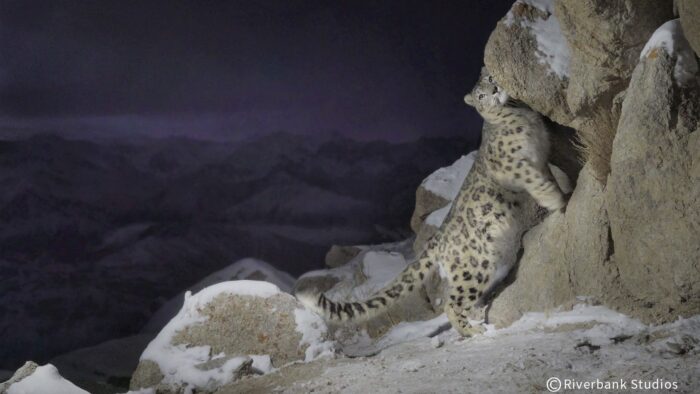An accomplished wildlife filmmaker from India, Gautam Pandey lives with a passion for the wild. Featured on Animal Planet and Discovery, his films Gyamo - Queen of the Mountains and Looking for Sultan, has been internationally recognized for their conservation message. Gautam has been a recipient of many national and international awards for his works.
In this conversation with CSP, Gautam shares his experience of using film as a medium to bring awareness about wildlife and combine the genres of Natural History and Conservation films.
What motivated you to take up conservation filmmaking as a profession?
Born into a family of nature-enthusiasts, my love for the wild started at an early stage. My mother is a trained puppeteer and uses puppets as a tool to communicate with differently-abled kids. My father is a wildlife conservation filmmaker. Both parents were involved with something that was larger than the self. I think seeing that around me while growing up helped shape what I live by. I started off with a bit of a mixed-up ‘career’, I worked as an illustrator, had a band and dreams of playing professionally, did visual effects and animations for films, and filming whatever projects I could.
The turning point for me was witnessing the impact of a film my father made. It was a conservation film called Shores of Silence that moved the government of India into bringing in legislation and banning the killing of the Whale Sharks on Indian shores. I realized I wanted to work on films that could create a larger impact, that went beyond just making a film. My parents inspired me to follow what came to me naturally. Going a step further, I also conduct film workshops to share and help build a community of filmmakers that want to tell stories that need to be told.
How does the Riverbank Studios seek to create an impact on environmental protection and conservation? Could you share some of your success stories?
We are always trying to engage an audience that is not necessarily concerned about the environment or the natural world. The conservation films work when people watch them and if we only reach a converted audience that already cares the circle of impact won’t grow.
For exactly this reason, after we made Shores of Silence, we dubbed the film in Gujarati and took the film to the fishermen all along the coast. We realized the power of appealing directly to human emotions, contextualizing it in accordance with the local culture, and eventually built a narrative that suggested the whale sharks are like daughters coming back home to give birth. This single thought triggered a change. The fishermen saw the whale sharks as daughters and visitors. There was a complete shift and the killing stopped.
We also made one of the first films on the Great Himalayan National Park and helped lobby for it to be recognized as a UNESCO world heritage site. When scientists and officials do surveys, they may not have a lot of time to evaluate. We teamed up with the forest department and filmed the western Tragopan which is not only one of the rarest pheasants in the world but had also never been filmed before in India. It took two years but the effort paid off.
We also love experimenting with new technologies and ways of telling stories that have conservation messages for the audience. One such experiment, that we most recently finished, was about three films on the Himalayan landscape shot in cinematic 360 Virtual Reality (VR). The films have really turned out to be so much more than we expected. By just putting on a headset, the viewer is immediately transported to the Himalayas. We managed to film wild snow leopards for the first time ever in the world in 360 VR. The films are scheduled to release on October 23rd, and we are really excited about it.
I have to admit it’s hard to describe the feeling you get when you experience this with a headset and headphones on. We realized the deep impact this can make when we took the film back to Ladakh and shared it with people from the local community. A man who saw the film came back to me after half an hour with tears in his eyes and said he never thought he would see something like that. He was referring to both the Snow Leopards and the Leh landfill which we filmed as well to drive home the seriousness of the issues that are threatening this landscape. VR can be a deeply emotional experience and can change perspectives almost instantly.

Can you share an anecdote on the challenges in filming the wild?
I’ll never forget a very very cold night I spent in hiding waiting for a snow leopard and her cubs to make an appearance and come feed on an ibex kill they had made earlier that day. My plan was to stay hidden in my hide all night and be ready to film them soon as dawn broke. I had flown down from Delhi that same day and without acclimatizing went up to 14,000 ft. It was around -20C, windy and I had a throbbing headache almost immediately. Sipping hot water, 5-star chocolates, and heating pads kept me going through most of the night. It was so quiet that my breathing felt too loud. At some point, the snow leopard and her cubs came down and started feeding. Around 2 am… I heard something moving around my hide and it was moving fast. I then realized it was a pack of wolves that had smelt the kill. A fight broke out between the leopard and the wolves! It was ink dark and I couldn’t film a single frame but I heard every growl and crunch of the ibex bones. The memory still feels so vivid that I can almost see it.
The challenges of wildlife filmmaking not only includes the difficult terrain and temperatures that we have to survive in, but also the uncertainty of the outcomes. While some shoots are comparatively less challenging than the others, we can never be sure of everything happening as we plan... once on the field, there are endless possibilities. But this is also one of the most exciting aspects of wildlife filmmaking, and there is something to learn every time.
How do you see the ongoing pandemic impacting the relations between man and nature?
I think most people have experienced nature a little more deeply these past few months. With the pandemic, we’ve all been forced to slow down and with not much to do, I think many of us naturally went back to just being more observant and noticed many wonderful and surprising things around us. In some ways, the balance between humanity and natural ecosystems has been restored to an extent, and that is a good thing.
But this crisis has also brought on the realization that overconsumption–of food, resources, fuel etcetera, has been a major challenge to sustainability, and that it can be curtailed. We live on a planet that is finite, there is a point where the balance will tip if it hasn’t already. We need to really look at our own lifestyles and very consciously reduce our footprint and impact. We can’t all go and pull plastic bags out of the Pacific Garbage patch, but we can all fix our little corner.

Apart from the phenomenal diversity of the species, what makes the Indian wildlife ecosystem unique from the rest of the world?
What makes India unique is definitely her people. There are very few places on earth that are as populated. From our mountains to our deserts, grasslands, forests, wetlands, and coastlines we have people and wildlife living next to each other. It’s definitely not easy, and when there are predators involved it's often dangerous.
And this has been the case for hundreds if not thousands of years. Nature and wildlife are essential aspects of our culture and storytelling. Wildlife storytelling is very much like that, observing and piecing together these fantastic little stories that surround us.
We need to remember this as a nation when we make decisions to develop infrastructure and power. That's what we try and achieve through our films as well and show that there is an inherent link between all living things, after all, we all live on the same rock!
Gautam Pandey will be speaking on Filming the Wildlife, as a part of CSP's upcoming festival, Srishti Sambhrama: Celebrating Earth Mother. Details of the event can be seen here.
The trailer of his 360 films on Snow Leopard can be seen here and for a VR experience, it can be seen here. All photos are the intellectual property of The Riverbank Studios, made accessible to CSP only.





